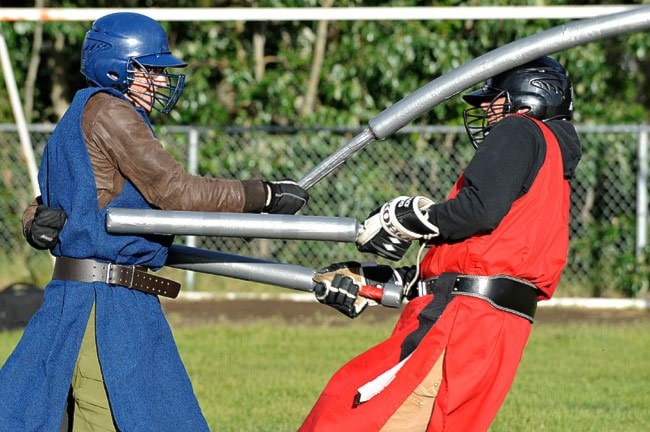If it weren’t for prostitutes, the Yukon’s first commercial airline might never have made it.
The Queen of the Yukon 2 kept breaking down and running out of gas on its way up the Pacific Coast in the summer of 1929, forcing its pilots John (Pat) Patterson and Gordon Stewart to make impromptu stops on lakes and ocean inlets.
At one such stop in Ocean Falls, British Columbia, there were no passengers in town willing to pay the airline for a ride up the coast, according to Stewart’s diary.
That was until a madame made them a cryptic offer they couldn’t refuse, telling them she couldn’t do business unless they came with her to the outskirts of the lumber boomtown.
There, they filled their Ryan B-5 aircraft with four well-paying ladies, and the pilots made the $140 they needed to get closer to the Yukon.
That historical tidbit, epitomizing the West Coast frontier life in all its make-or-break glory, may have been lost forever if Gordon Stewart’s son, Jerry Stewart, hadn’t documented his father’s airline mementos ever since Gordon passed away in the late 1970s.
The story is on display in Barnstorming with the Queen, a collection of photographs and memorabilia at the Yukon Museum of Transportation chronicling Gordon’s days as a business manager for the Yukon Airways and Exploration Company.
The exhibition opened on Wednesday, with three generations of Stewarts in attendance. Jerry’s wife June, his son Jeremy and his granddaughter Ella, 11, were there to honour their family’s historical contribution to the Yukon.
“It belongs here, that’s what (Jerry’s) friends were saying,” said Jeremy, standing under the first Queen’s replica in the museum.
“It’s the first commercial airline in the Yukon and you have almost nothing anywhere else except for a few photos in the archives.”
The prints are stunning in their simplicity and evocative use of light.
They were taken from glass negatives kept locked away for decades. They remain outstanding examples of early Yukon photography, when film wasn’t wasted and every shot had to be a beaut.
“He use to get children to sit on newspapers to get better lighting,” said June, of her father-in-law’s photography.
Gordon’s diary and his pilot’s skull cap are also on display at the museum.
The float plane was built by Mahoney and Ryan Aircraft Corporation, the same company behind Charles Lindbergh’s Spirit of St. Louis. The Spirit’s sister ship, the Queen of the Yukon, crashed in May 1928.
That didn’t stop Gordon, who was in his early 20s, and his co-entrepreneurs from believing in their business. He and Patterson headed down to
St. Louis to grab a second plane.
Their treacherous journey up the West Coast was a quintessential example of barnstorming, a term used to describe pilots who made a living offering short airplane flights to dazzled onlookers.
“The diaries tell all the stories,” said Jeremy. “(Jerry) wrote every night about the trip up to the Yukon.”
“They would fly into lumber camps and mining camps and fly around to make money to pay for gas.”
Back in those days, an airplane doubled as a kind of circus ride.
“People would come over and they would take them for a ride, which was kind of novel back then.”
Sometimes the only ones with money were the boomtown hookers.
“Whatever payed the bills, I guess,” said Jeremy.
The Queen lived a short life once she finally made it up the Yukon—working most her days between Dawson City, Keno and Mayo.
She crashed right after takeoff in Mayo in November 1929, killing the pilot and co-owner, Pat Patterson.
“When the Queen of the Yukon 2 crashed, (Gordon) was kind of the business manager and he went down to Detroit to try and get a new plane,” said Jeremy. “That all fizzled out and never happened.”
“My grandfather was kind of the last man standing with the Yukon Airways,” said Jeremy.
Gordon went down to Washington State to finish school, but then returned for one last go in the Yukon, working on a minesite at Miller Creek.
But the Second World War made supplies difficult to get, and in 1941 Gordon had to pack himself, his wife and his two sons off to Ontario.
Once in Port Credit, the family didn’t let go of their Yukon heritage and Jeremy was raised in the stuff.
“It was pretty prominent,” said Jeremy. “It was just because of all the pictures and my dad (having grown up) there.”
Gordon passed away around 1978, he said. That’s when Jerry became purveyor of the airline artifacts.
“He wanted to preserve it,” said his wife June, 72. “He was a historical collector of sorts.”
The mementos might have remained in the family forever had two pilot buddies not convinced Jerry of their historical value.
“He had a couple of friends who were pilots, like in the last 10 years, who would say you really have to donate this,” said Jeremy. Both friends were bush pilots and one still teaches survival tactics for float planes.
“So he spent a lot of time putting it together,” he said.
Jerry ordered the photographs chronologically and tagged each of them with dates and locations.
“In addition to the (airline) stuff, Gordon had his personal collection because he loved photography and he had a lot of diaries he kept to himself,” said Jeremy.
In 2006, Jerry approached the Yukon’s Transportation Museum to donate his father’s history.
Sadly, Jerry wouldn’t live to see the day that the collection made it on display—he passed away last year.
“He’s with us now,” said June.
The three Stewarts received a warm welcome from the 50 people who attended the opening.
“You guys are legends up here,” said Minister of Tourism Elaine Taylor, who thanked the family for their significant donation.
“Looking at this place now, it was absolutely the right thing to do,” said Jeremy.
The exhibition runs at the museum all summer and then moves to Arts Underground in November.
Contact James Munson at
jamesm@yukon-news.com.
